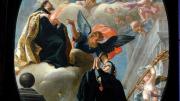In 1979, to commemorate 20 years of partnership between the sister cities of Boston and Kyoto, 43 enormous crates arrived at the Boston Children’s Museum. The crates contained, in bits and pieces, a nineteenth-century, kyo-machiya style townhouse of the sort used as workshop and dwelling by Kyoto merchants. Carpenters from Japan accompanied the boxes and spent months in the museum, diligently putting the house back together for permanent display. The current exhibit, located on the museum’s third floor, opens with this five-minute video showing the carpenters at work.
By Rachel Strickland and Richard Leacock Copyright © 1981 The Children's Museum
Rebuilding an Old Japanese House
For more about Japanese architecture, read “Works and Woods," in Harvard Magazine’s September-October 2008 issue.








